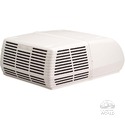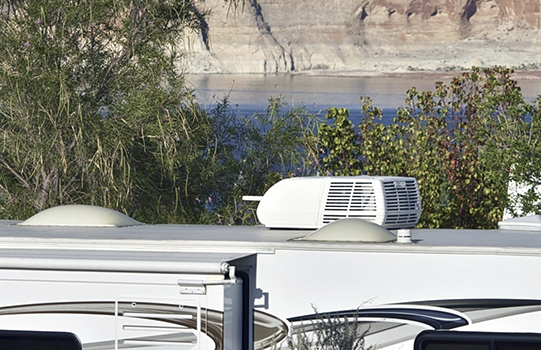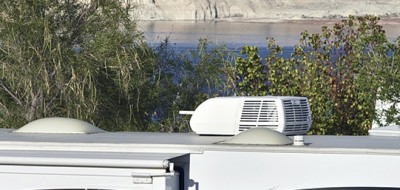 Air conditioners are a welcome feature on your RV on a hot afternoon or evening. They only have to fail once on a hot humid day to remind you just how great they are. So it is important to maintain and care for these workhorses to ensure their efficiency and longevity.
Air conditioners are a welcome feature on your RV on a hot afternoon or evening. They only have to fail once on a hot humid day to remind you just how great they are. So it is important to maintain and care for these workhorses to ensure their efficiency and longevity.
Perhaps the simplest and most neglected maintenance chore is the cleaning of the air filters. They are located in the intake side of the AC unit or the return, if it is a ducted installation. Either way, they are easily accessed from inside the RV. The filters are generally made of foam rubber that can be washed. Be sure to allow the filters to dry prior to reinstalling. Dirty, plugged-up filter material is the most common cause of loss of AC efficiency.
The evaporator on roof top units is located inside the shroud on the roof. The cover should be removed and the evaporator fins cleaned free of insect nests, debris and dust. A compressed air gun is a good way to thoroughly remove this. About every 5 or 6 years, it is prudent to replace the shroud cover. The plastic material tends to become brittle over time and its entire integrity is required for efficient operation.
When plugging into shore power at a new location, check the voltage within your RV prior to starting up any AC units. You should see 110 volts or higher. If your unit does not have an AC-voltage readout, you can buy one that merely plugs into one of the duplex household outputs. With the AC(s) running, the meter should be at least 103.5 volts. If the voltage is below this, your air conditioner can be damaged over time. Your AC unit was designed to operate between 103.5 and 126.6 VAC. Amps increase when voltage decreases, causing an overheat. If ever you observe less than 100 volts, shut down all AC’s and any motor-dependant AC loads.
Perhaps one of the most common RV AC breakdowns is a failed capacitor. The symptom of a failed capacitor generally is the AC compressor starting and then stopping almost immediately. There are usually at least two capacitors, a starter and a run. The replacement of these must be rated at the same microfarad. Do not attempt to replace a failed capacitor yourself. They are powerful electrical energy storage devices that can hold a charge long after all electrical power has been terminated. Seek a qualified electrician or HVAC service person.
These tips, along with those shown in your AC manual, should help keep you cool for many years to come.








Peter Mercer
Great tip, Richard! You have saved yourself a possibly expensive solution of adding an additional air conditioner. Such a task involves possibly upgrading much of your internal AC panel and wiring to handle the increased amperage.
Smart thinking.
Richard
I have a 2013 Jayco Eagle 31.5 RLTS that has just 9000 miles on it!! We just got back from a trip to El Paso, where the outside temp.reached 97°-103° & inside reached 89°-91° with a single AC unit!!! I first tried to clean the intake filter but it really didn’t cool us down much more, figured I will need to purchase a second AC unit. I ended up purchasing some 1″x 4′ x 8′ sheets of foil backed foam insulation & cut them to fit every window & even the skylight over the shower!!! After that the temperature only hit 81° once because of the door being opened & closed often, the rest of the days it never got over 79° which was a big difference!!! of 5th & also class A owners told me they were also in the 80’s to 90’s!!! Some had 2AC